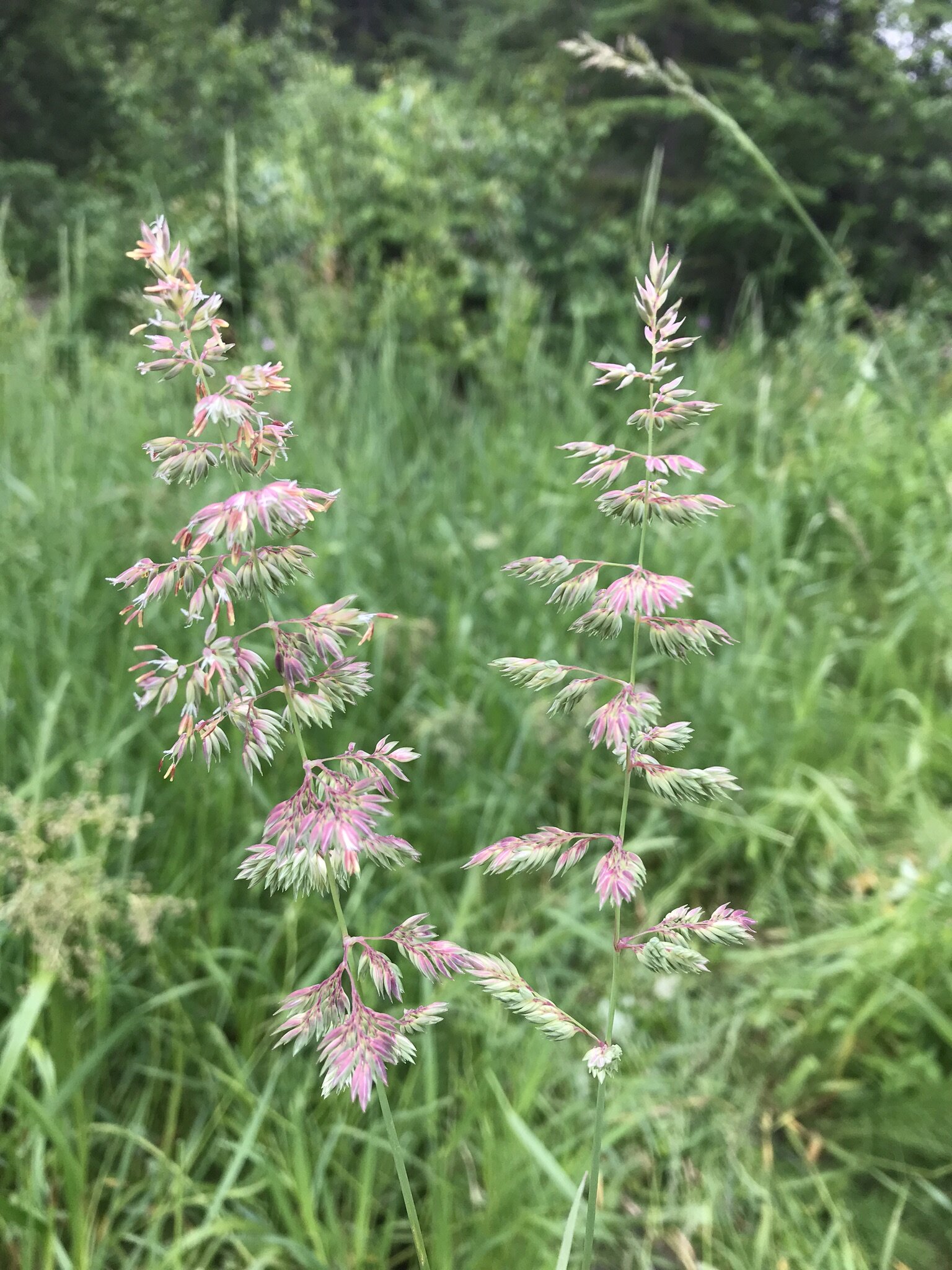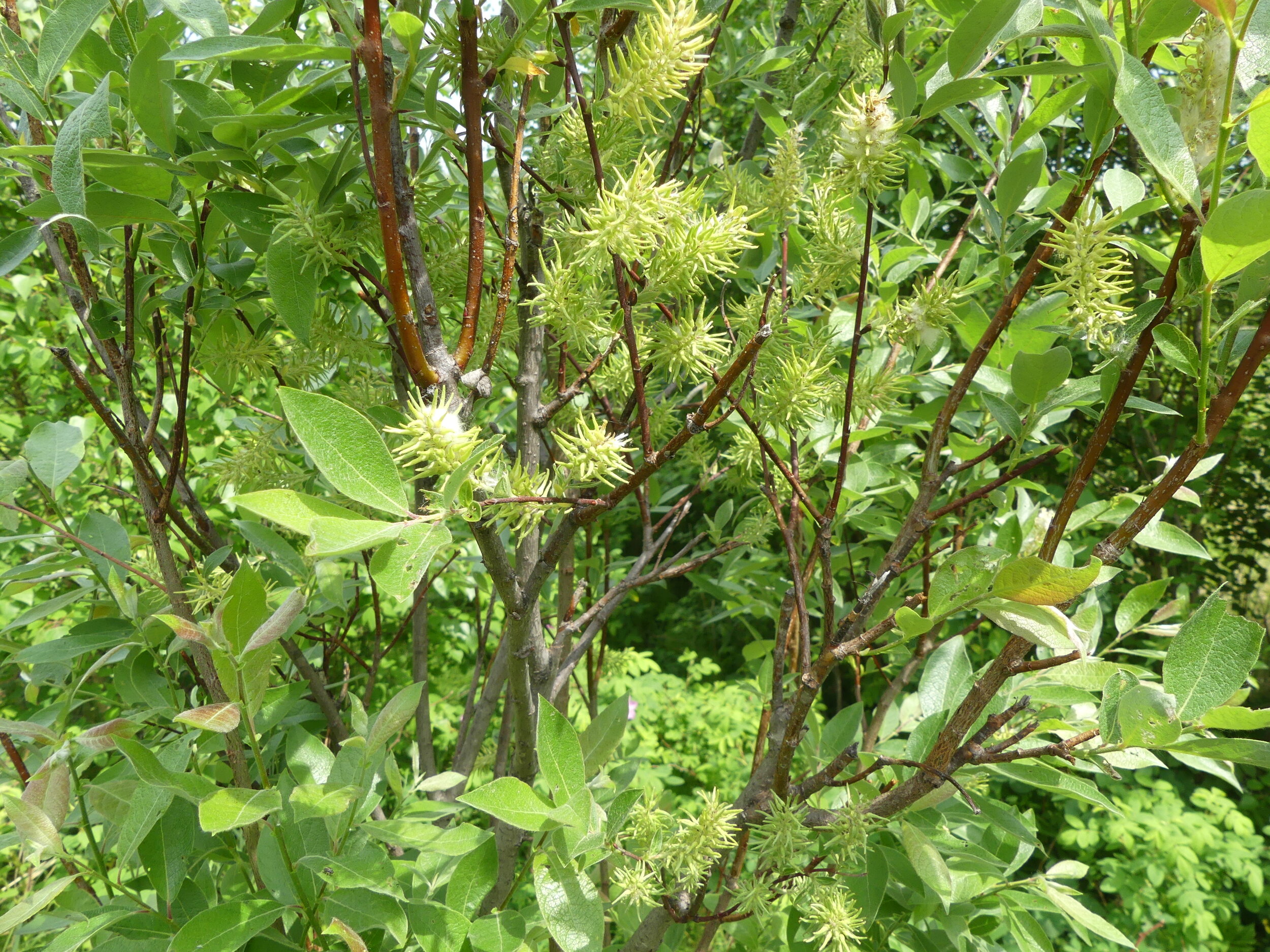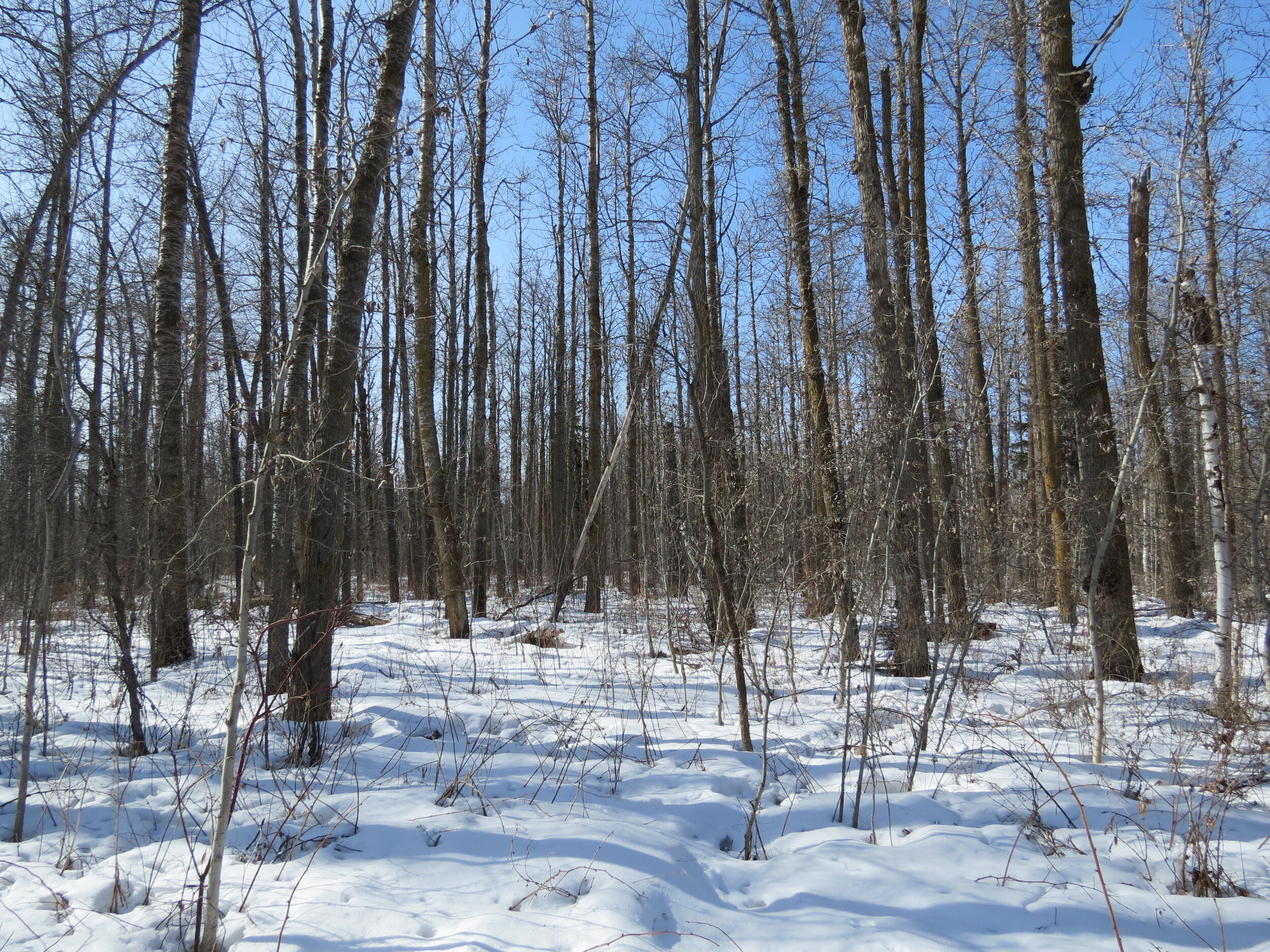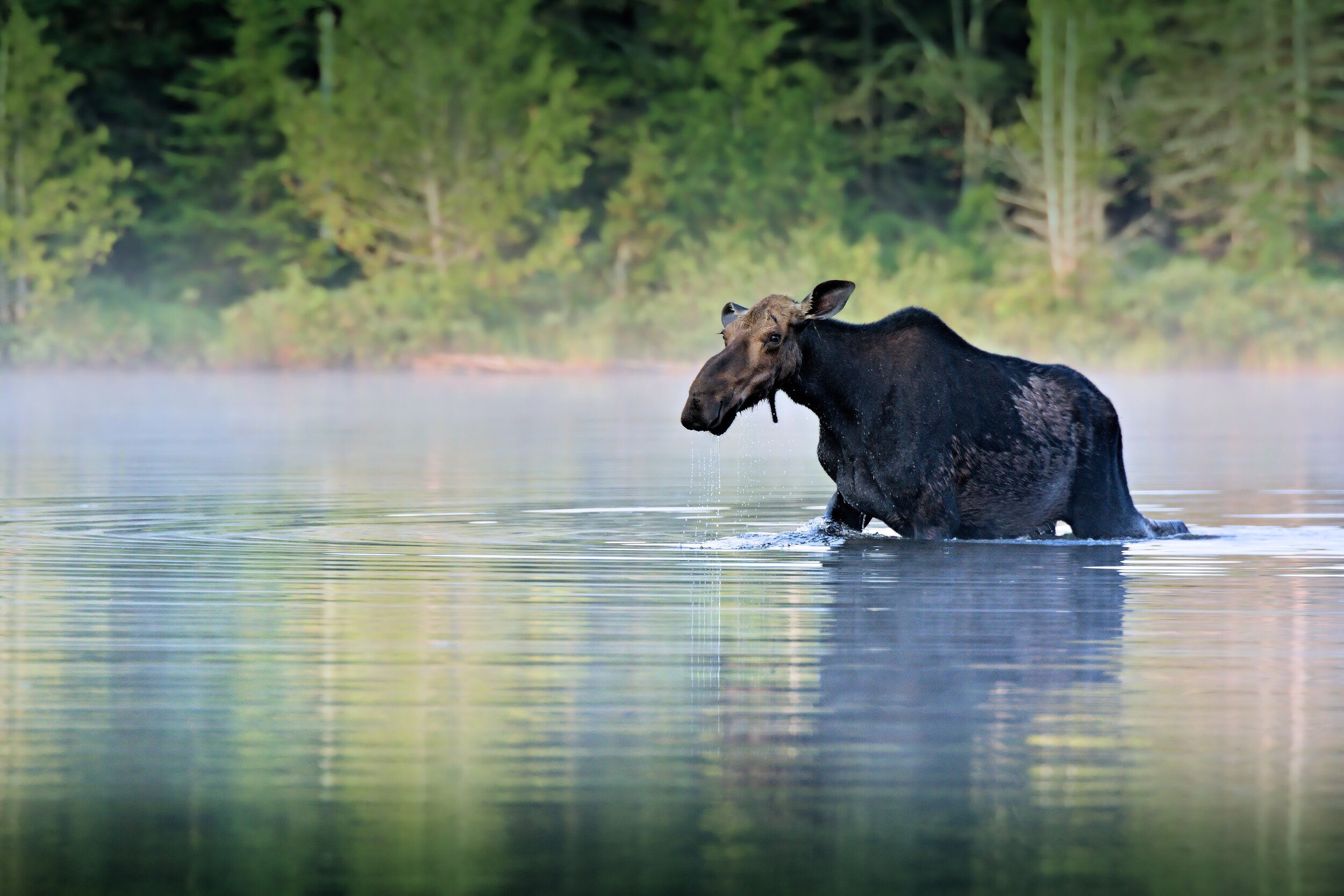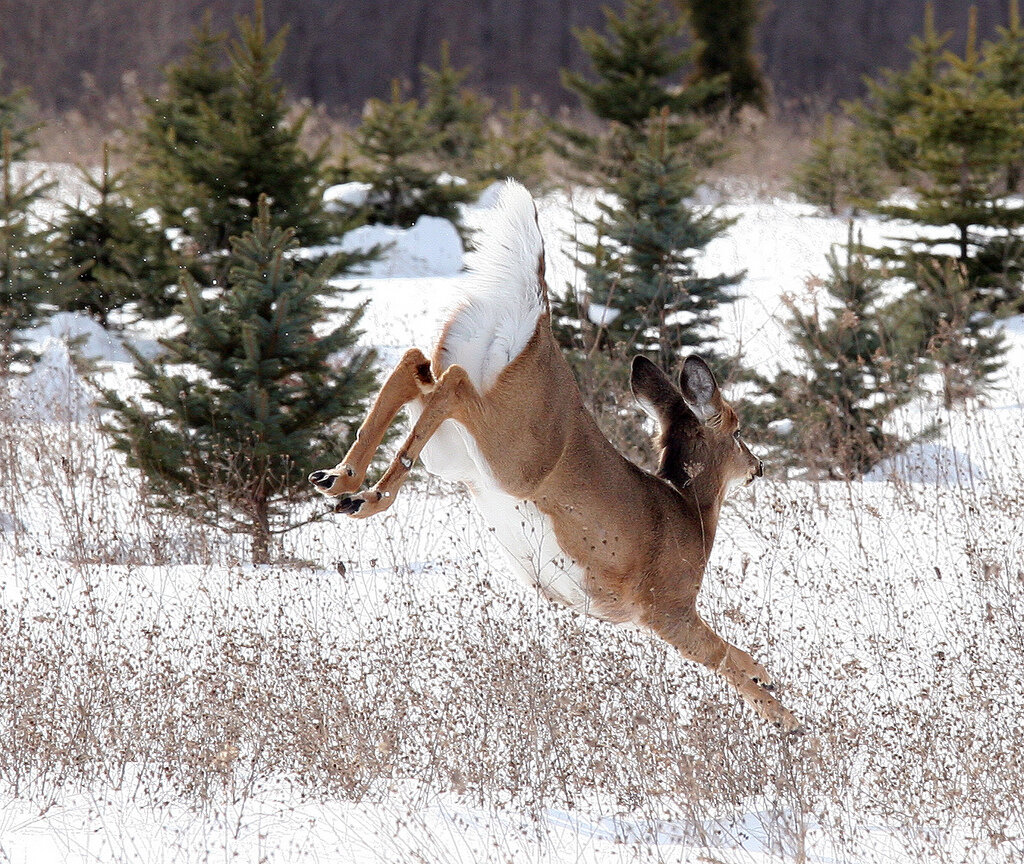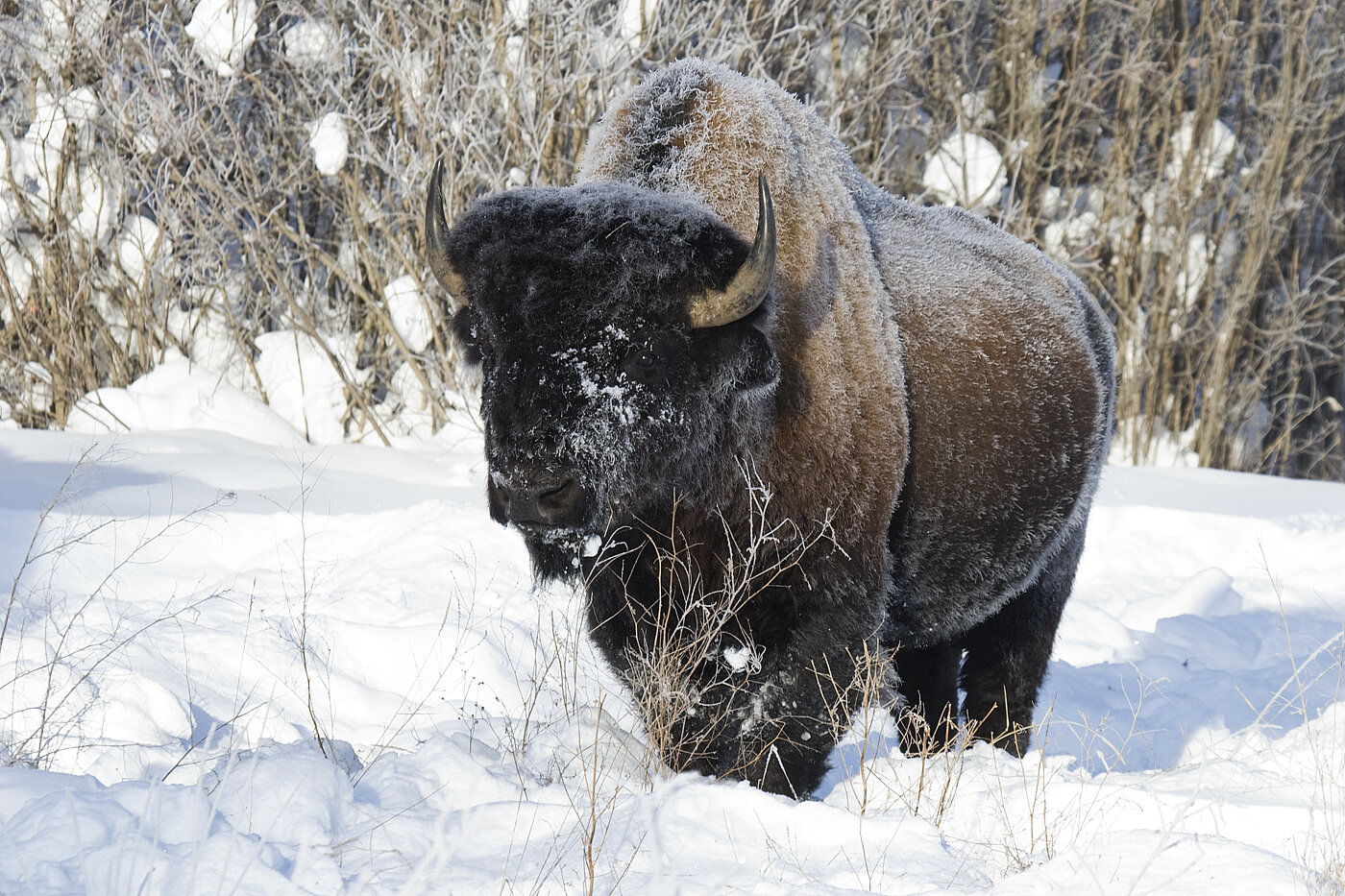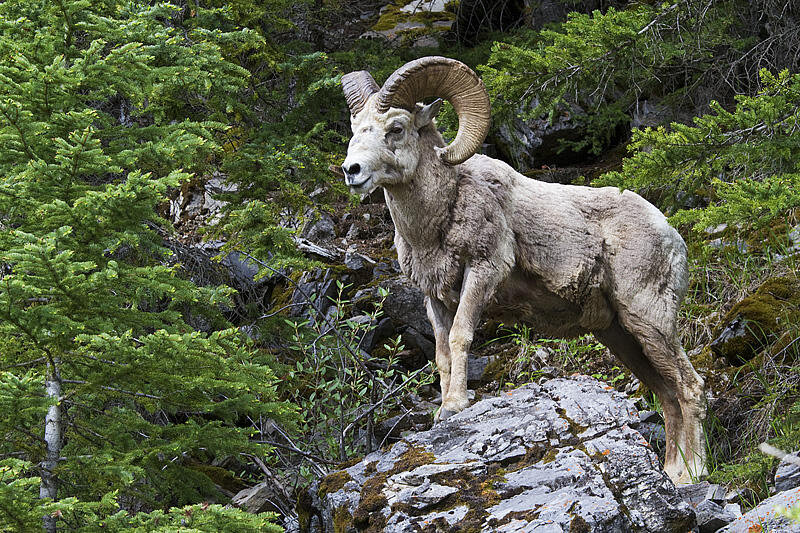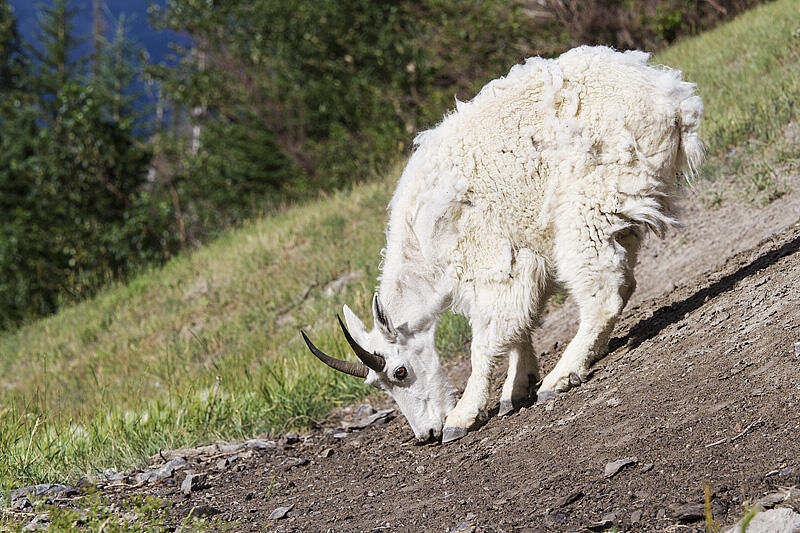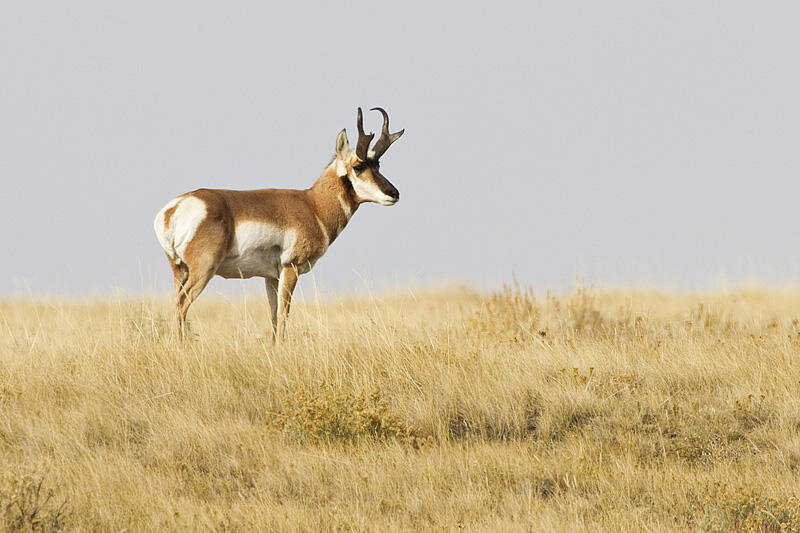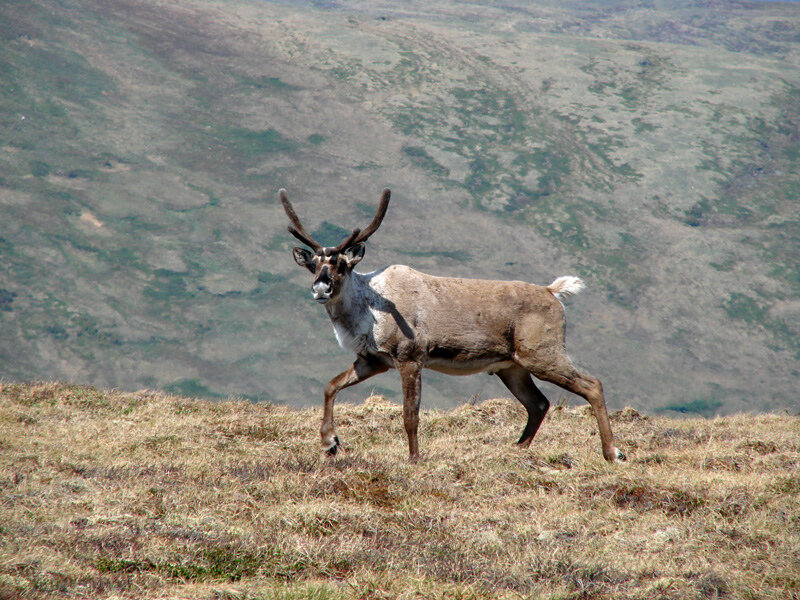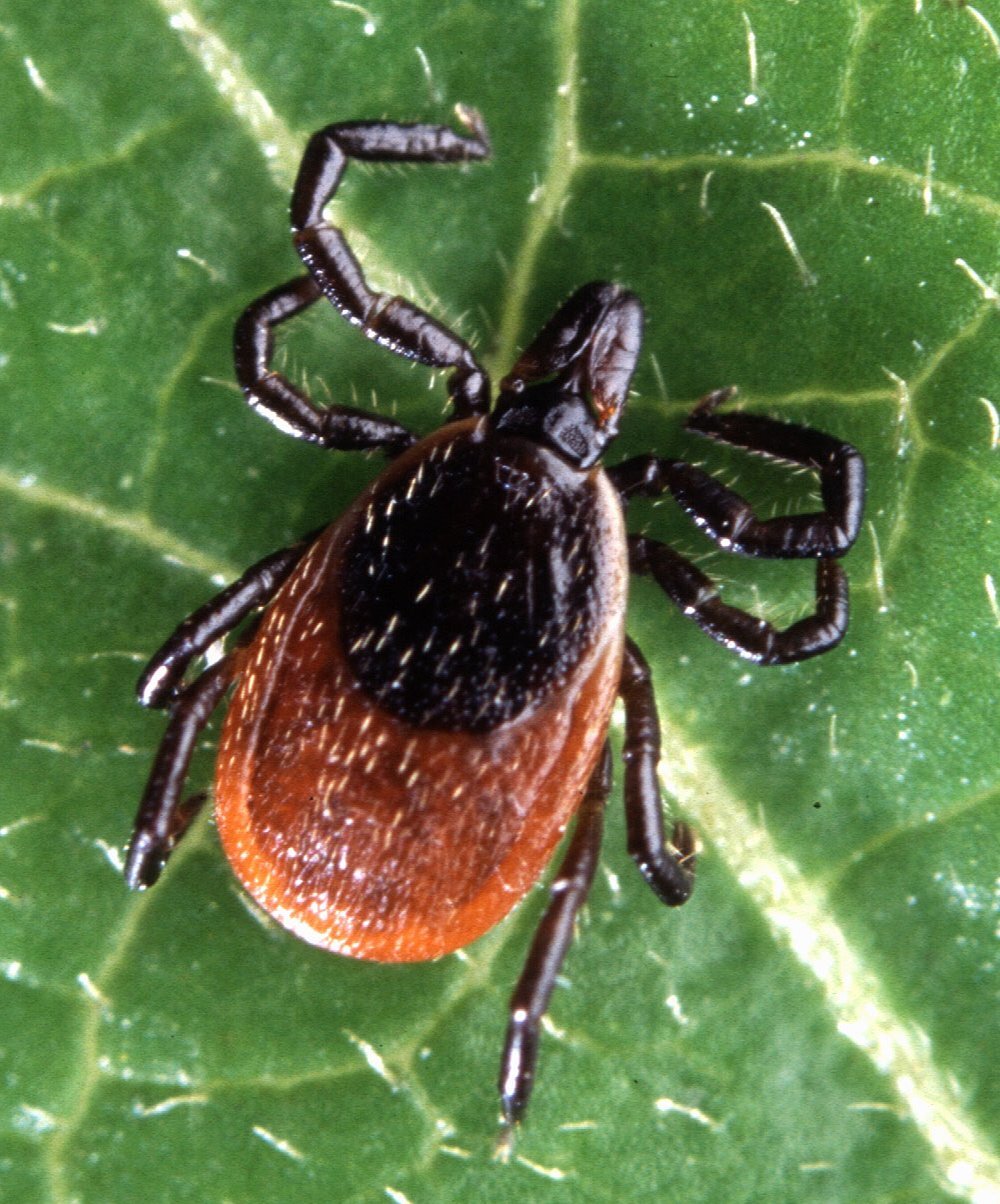EALT is all about conservation – what do you think about when you hear conservation? Often attention is attracted to the large animals. At EALT we think that all animals and plants are important, but when we conserve habitat for large animals, this often preserves habitat for many smaller and less charismatic species as well. This is known for the “umbrella” effect. If protecting large ungulates protects all sorts of creatures that sounds pretty good! Let’s learn a bit more about ungulates, and where and how they live.
What is an ungulate?
Ungulate is the scientific term for hooved mammal. This group is spread across the world and includes deer, bison, moose, as well as exotic animals like giraffes and elephants.
Photo Credit: Ryan Hagerty, USFWS.
What are some of the differences and similarities between ungulate species?
Some are considered even toed or odd toed, although this doesn’t always match up with the actual number of toes that they have.
All living ungulates are herbivorous, like deer, or omnivorous, like pigs.
Some ungulates are ruminants, and others are hindgut fermentors. Ruminants have to chew their food twice – the second time gathering more valuable nutrients that are harder to digest. Most species of ruminants don’t have upper incisors, and instead have a dental pad, which is a chunk of bone instead of individual teeth. The process of rumination allows them to eat quickly and then spend the day digesting and not have to eat frequently. Through the process of rumination, animals produce methane – this actually accounts for a significant portion of greenhouse gas emissions. Animals that use hindgut fermentation include rabbits and horses, but all of our native hooved mammals are ruminants. Hindgut fermenters have to constantly eat, but they can get more nutrients out of low quality feed.
Ungulates have horns or antlers – you can read about the difference here. In some species only males have these, and in others both males and females do, although females are usually smaller. These are mainly used by male ungulates to fight for mates, though they may also be used to fight off predators. Antlers are grown and shed every single year, and horns continue growing for life.
Behaviour
Ungulates in urban spaces are still wild
Photo Credit: Gerald Romanchuk
Ungulates need space. It’s exciting to see a large ungulate in the wild, but sometimes people don’t understand these creatures and their behaviour, and put themselves in danger. Some large ungulates can become very habituated, or used to human presence. This is most noticeable with deer and elk in Alberta. However, even when they are very habituated, they can still be dangerous.
Ungulates may be especially aggressive during the breeding season (Sept-Oct) and when they have young to protect (spring). They can charge and even try to harm you. Even if they look cute, they are still wild animals and may act unpredictably, so be cautious and give them the space they need.
Breeding
Most ungulates have a group of females (a “harem”) mating with one dominant male. This male scares off all challengers for a group of females, sometimes through violent fights. This is called the “rut” time of year, and this is when ungulates are especially dangerous. In North America the rut occurs around October. Male ungulates shed their antlers in December, and grow them again in April. Males and females generally do not group together outside of the breeding season.
Reproduction
Photo by Gerald Romanchuk
In good years, deer and moose may have twins or triplets and in bad years they may not have any young at all. Although, it is common for deer to have twins. Young are born in early spring, around May, and they will stay with mom until she has next year’s young.
Interestingly, sometimes ungulates such as moose will swim to an island to give birth – they will be safer from predators, and young can swim within several days after birth.
When White-tailed Deer fawns are very young, mother deer will leave the fawn alone while they forage during the day and return to feed them at night. This sounds strange to us, but when very young fawns have hardly any scent and so are not easily found by predators. It is safer for the fawn to hide alone while it is too young to outrun a predator.
For those species that gather in herds, typically fawns and calves will remain separate with their parent until they are about 10 days old. After that point, they will join the herd, as they have built up some strength and have a better chance of running with the herd from predators.
What do they eat?
In summer when fresh vegetation is growing, ungulates eat palatable leaves and twigs of plants, and even aquatic vegetation. In winter they are mostly limited to twigs and bark, though some grassland species will dig through snow to reach grass. Different species focus on different food sources depending on their habitat and time of year.
Where do they live?
Different species of ungulates in Canada, Alberta, and the Edmonton area use different types of habitat.
Moose (Edmonton) are present across Alberta in forested areas with wetlands present. They can swim well, and prefer to stay near wetlands where they can find food, water, and escape from bugs and predators. Did you know that our mascot is a moose? Check him out here!
White-tailed Deer (Edmonton) prefer forested areas. In summer, any forest will do and in winter they may shift to forests that provide more cover from snow.
Mule Deer (Edmonton) prefer grasslands or the open edges of forest.
Bison (Edmonton) live in grasslands and open forests. There are a few remaining free ranging herds in Northern Alberta and Canada, but most live in fenced protected areas or on game farms.
Elk (Alberta, rarely Edmonton) prefer grasslands but will occupy forest and parkland in Alberta. They are more frequently found near higher elevation. They often prefer a small territory, but may move seasonally between different types of habitat, typically from higher elevation in summer to valleys in winter.
Bighorn Sheep (Alberta) prefer mountainous areas and so are not found in the Edmonton region. They prefer treeless grassland habitats, often with steep slopes so they can escape predators.
Mountain Goats (Alberta) also prefer mountainous areas and are not found in the Edmonton region. They are even more sure footed than Bighorn sheep and will live in extremely rocky mountain habitats with sparse trees.
Pronghorn (Alberta) prefer grassland habitat and occupy areas to the south of Edmonton.
Caribou (Alberta) live in northern Canada and Alberta and are also not present in the Edmonton region. They live in forested and/or alpine areas, including the barren tundra, and may travel great distances between these habitat types at different times of year.
Overwintering
There are several adaptations that ungulates have for dealing with snow, cold temperatures, and lack of food.
Physical adaptations.
Moose have long skinny legs so they can walk through snow with minimal resistance.
Caribou have large hooves that spread out their weight so they can walk on top of snow.
Behavioral adaptations.
In winter when food sources are limited, moose and deer spend more time resting to reduce their energy use to match reduced food intake. They often lose weight during this time as well and rely on the fat stores that they built up in the fall.
Moose and deer switch to browsing twigs as their main source of food and Caribou eat ground and tree lichen rather than young green vegetation that they can find in the summer.
Habitat selection.
Many ungulates move at least short distances to habitat that is more suitable for winter survival. Deer move to more protected forests, and Elk move from high elevations into valleys.
Ungulate Movements
Caribou by Alfred Cook
It’s not just birds that migrate – many ungulates do as well in North America and other parts of the world. Ungulates often make large or small migrations, depending on the species. Some caribou move in huge herds for great distances, whereas bighorn sheep move short distances seasonally, and moose and deer may not move very far at all.
Big ungulate health
We often think of nature as pristine and in many ways it is. However, despite our expectations, animals and plants face infection and disease regularly.
What are some major health concerns for ungulates?
Ticks
Deer Tick by Scott Bauer
Ticks are small parasites that use mammals and other animals as hosts in various stages of their life cycle. They suck blood from the host during energy intensive stages of their life cycle, including molting and reproducing. Ticks in large numbers can accumulate on wildlife and have negative impacts on them. Some ticks can also be a health concern for humans too!
We usually worry about ticks that carry Lyme disease because this disease can spread to humans and has long term negative impacts. The ticks that carry Lyme disease are called deer ticks, but deer do not actually catch and spread Lyme disease like rodents do. Their immune systems can resist this infection, so even if they are bitten by infected ticks they will not spread this to humans. Ticks do feed off deer and are supported by the deer population, however, and anywhere there are deer there are likely ticks.
It’s not all about Lyme disease
Deer ticks are well known for their role in human diseases, but there are others that primarily impact the ungulates that they feed on. One such tick is the Winter Tick.
Winter Ticks look similar and have a similar life cycle to Deer Ticks, but they don’t carry Lyme disease. Nonetheless, they can still have a great deal of impact on ungulate health. In years of significant infection, a single moose could carry 30,000 ticks or more, and it is possible for them to carry over 300,000. An infection of this magnitude can cause hair loss, emaciation, and death.
Moose are affected more negatively by winter ticks than any other ungulate species, although all ungulates in Alberta can carry these ticks.
Why such a large impact?
These ticks take energy by removing blood from the animal, which can become significant when large numbers are present. Moose must work to replenish that lost blood during winter when they have access to less food and energy. To add to this burden, these ticks cause a great deal of irritation and distract the animal from getting the food it needs to survive. Not only that, but if they respond to this irritation by scratching excessively, they remove hair and then experience heat loss too.
Why worry?
Install An overly large abundance of ticks is not healthy for deer. Even if the amount of blood they take is very small, the irritation from them could be enough to impact the success of the animal. Large abundances of ticks cause suffering and death.
Isn’t it natural?
Ticks have coexisted for centuries. However, in recent history, there have been several changes that are likely to change the impact that ticks have.
Climate Change - Warmer temperatures and changing climate is likely increasing the number of ticks that survive each year, pushing an increase in numbers of ticks over time.
Photo Credit: Steph Weizenbach
Loss of natural predators - Wolves have been pushed far out of their historical range in North America, and continue to be persecuted even now. In a well-functioning ecosystem, wolves would catch and eat diseased ungulates, reducing the spread of diseases and suffering of animals. When wolf populations are reduced, ungulate populations grow until they are limited by food resources, meaning more deer die of starvation and disease than would if wolves were present.
What about other diseases?
Chronic wasting disease (CWD)
You may have heard this term before, but what actually is CWD? According to the Canadian Food Inspection Agency (CFIA), CWD is a disease of the nervous system that leads to death in infected animals. This disease affects deer, moose, elk, and caribou.
Infected animals have difficulty functioning and are more prone to illness like pneumonia. They may behave unusually, may become separated from their herd, and lose weight. CWD can spread from animal to animal, or from the environment to another animal, making it difficult to control.
What’s the big deal?
Just like those infected with ticks, wildlife with this disease suffer. Once again, when wolves are prevalent in an ecosystem, they would control the spread of this disease by catching and eating badly affected individuals before they can spread the disease to many others.
In terms of farmed animals, this disease has continued to become more prevalent despite aggressive attempts to eradicate it. While this disease has not been found to spread to humans, CFIA recommends that meat contaminated with CWD not be eaten, just to be safe. This disease can impact the livelihood of farmers, as well as anyone who hunts to provide food for their families. This could be a human health concern in many northern populations where hunting is a major source of food – residents may have to choose between a reduced amount of food they can rely on, increased costs of buying food elsewhere, or may risk eating contaminated meat.
Photo Credit: Doris May
What to do?
Currently there is no vaccine or cure for infected individuals with CWD or parasitism by ticks, but the spread of the disease can be reduced. The best way of reducing both CWD and ticks is through allowing natural predators to flourish.
You can also reduce the spread of these diseases by doing your part to resist the impacts of climate change! See some ideas of how to do that here.
Conservation
With many different habitat types to cover, it looks like many of our ungulates would make good “umbrella” species to protect other types of wildlife. Conserving habitat for Moose and deer will also conserve habitat for birds, reptiles, plants, and fungi, including species at risk. Help protect habitat for ungulates and other creatures today by Sponsoring a Moose at EALT, making sure that your yard is safe for wildlife, and by volunteering.
Did you know?
Did you know that whales are descended from hooved mammals?
Antlers grow faster than any other mammal bone.
When antlers are growing they are covered in velvet, which is actually a type of skin full of blood vessels. This helps the bone grow quickly.
Moose can dive several meters underwater to find plants to eat.
The only land animal that can run faster than the pronghorn is the cheetah. Pronghorn likely evolved alongside a North American cheetah which has long been extinct.
For more fun facts and interesting information, subscribe to our Nature Notes blog!
Sources:
Animal Facts: Moose. (2019). Retrieved from Canadian Geographic on October 22, 2019: https://www.canadiangeographic.ca/article/animal-facts-moose
Animal Facts: Pronghorn. (2019). Retrieved from Canadian Geographic on October 22, 2019: https://www.canadiangeographic.ca/article/animal-facts-pronghorn
Bouchard, C., Dibernardo, A., Koffi, J., Wood, H., Leighton, P.A., and Lindsay, L.R. (2019). Increased risk of tick-borne diseases with climate and environmental changes. Can Commun Dis Rep; 45(4):83–9. Retrieved on October 22, 2019: https://www.canada.ca/en/public-health/services/reports-publications/canada-communicable-disease-report-ccdr/monthly-issue/2019-45/issue-4-april-4-2019/article-2-increased-risk-tick-borne-diseases-climate-change.html
Caribou. Date of publication unknown. Retrieved from Hinterland Who's Who on October 22, 2019: http://www.hww.ca/en/wildlife/mammals/caribou.html
Cicerone, R. J., and Oremland, R. S. (1988). Biogeochemical Aspects of Atmospheric Methane. Global Biogeochemical Cycles, 2(4). Retrieved on October 22, 2019: https://web.archive.org/web/20190521231210/https://cloudfront.escholarship.org/dist/prd/content/qt3xq3t703/qt3xq3t703.pdf
Chronic wasting disease (CWD) fact sheet. (2019). Retrieved from the Canadian Food Inspection Agency on October 22, 2019: http://www.inspection.gc.ca/animals/terrestrial-animals/diseases/reportable/cwd/fact-sheet/eng/1330189947852/1330190096558
Deer Tick. Date of publication unknown. Retrieved from National Geographic on October 22, 2019: https://www.nationalgeographic.com/animals/invertebrates/d/deer-tick/
Dumic, I., and Severnini, E. (2018) “Ticking Bomb”: The Impact of Climate Change on the Incidence of Lyme Disease. Canadian Journal of Infectious Diseases and Medical Microbiology; 2018. Retrieved on October 22, 2019: https://www.hindawi.com/journals/cjidmm/2018/5719081/
Mountain Goat. Date of publication unknown. Retrieved from National Geographic on October 22, 2019: https://www.nationalgeographic.com/animals/mammals/m/mountain-goat/
Mountain Sheep. Date of publication unknown. Retrieved from Hinterland Who's Who on October 22, 2019: http://www.hww.ca/en/wildlife/mammals/mountain-sheep.html
Mule Deer - Distribution. Date of publication unknown. Retrieved from University of Wisconsin on October 22, 2019: https://www.uwsp.edu/wildlife/Ungulates/Pages/Mule%20Deer/Mule-Deer-Habitat.aspx
North American Bison. Date of publication unknown. Retrieved from Hinterland Who's Who on October 22, 2019: http://www.hww.ca/en/wildlife/mammals/north-american-bison.html
North American Elk. Date of publication unknown. Retrieved from Hinterland Who's Who on October 22, 2019: http://www.hww.ca/en/wildlife/mammals/north-american-elk.html
Waterton Lakes National Park, Ungulates. (2018). Retrieved from Parks Canada on October 22, 2019: https://www.pc.gc.ca/en/pn-np/ab/waterton/nature/faune-wildlife/ongules-ungulates
What is a Ruminant Animal? Date of publication unknown. Retrieved from BC Agriculture in the Classroom Foundation on October 22, 2019: http://www.cattle.ca/assets/Uploads/232d540861/ruminants.pdf
White-Tailed Deer. Date of publication unknown. Retrieved from Hinterland Who's Who on October 22, 2019: http://www.hww.ca/en/wildlife/mammals/white-tailed-deer.html
Winter Tick in Moose and Other Ungulates. (2000). Retrieved from the Canadian Cooperative Wildlife Health Centre on October 22, 2019: http://www2.cwhc-rcsf.ca/wildlife_health_topics/winter_tick/wintertick.php
The gray wolf of North America includes several subspecies: the white arctic wolf, the red wolf of the southwest, the grey timber wolf of the eastern forests, and the big western wolf. (2019). Retrieved from the Alberta Wilderness Association on October 22, 2019: https://albertawilderness.ca/issues/wildlife/wolves/




